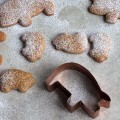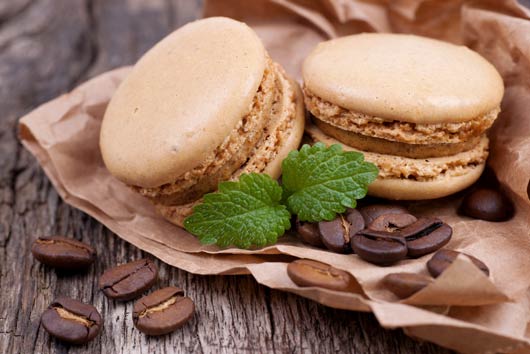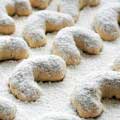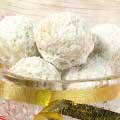
These cookies go by the many endearing names for pigs in Spanish: cerdito, cochinito, marranito, or puerquito. This is the recipe that is the most requested on my blog by Mexicans living abroad. The piggies’ honeyed nuttiness comes from the piloncillo, raw brown sugar that flavors the sticky dough. It’s so irresistible that I have to hide it from my boys.
Read Related: Eva Longoria’s Mexican Wedding Cookies Recipe
Although they are made like cookies, cut like cookies, shaped like cookies, and baked like cookies, piggies are more like a delightful marriage between a traditional bizcocho or pan dulce (“sweet roll”) and a cookie. The moment you take them from the oven, they are at their softest and fluffiest—closer to a sweet roll. If you cover them as soon as they cool, they will remain soft and fluffy for a while, but as the days go by, they will harden and have the snap of a traditional cookie. If you want them to harden faster, don’t cover them.
You can find pig-shaped cookie cutters online, or use any shape you like—but then, you need to change their name.
Makes: 24 to 28 cookies
Prep Time: 20 min. plus cooling
Cooking Time: 30 min.
Note: dough can be refrigerated for up to 2 days; cookies can be stored in an airtight container for up to 4 days
Ingredients:
1¾ cups (10 ounces) firmly packed grated piloncillo or dark brown sugar
¾ cup water
1 Ceylon cinnamon stick
½ pound (2 sticks) unsalted butter, cut into small pieces, at room temperature, plus more for the cookie sheets
2 tablespoons honey
4¼ cups all-purpose flour, plus more for dusting
1 teaspoon baking powder
1 teaspoon baking soda
½ teaspoon kosher or coarse sea salt
2 large eggs, lightly beaten, at room temperature, plus
1 large egg, lightly beaten, for glaze
Confectioners’ sugar for dusting (optional)
Instructions:
- In a medium saucepan, combine the piloncillo, water, and cinnamon and bring to a simmer over medium heat. Lower the heat to medium-low and simmer for about 15 minutes, or until the piloncillo has dissolved and the liquid thickens to a light syrup. Turn off the heat and remove the cinnamon stick. Add the butter and honey and stir until they melt.
- In a large bowl, whisk together the flour, baking powder, baking soda, and salt. Make a well in the center and pour in the piloncillo mixture. Mix with a rubber spatula until well combined. Add 2 of the eggs and stir until thoroughly mixed. The dough will be very sticky and gooey.
- Place two long pieces of plastic wrap, one running horizontally and one vertically, in a medium bowl, letting the ends overhang the edges of the bowl. With a rubber spatula, scrape the dough onto the plastic wrap, then bring the edges of the wrap over the dough and secure tightly (leave the dough in the bowl). Refrigerate for at least 2 hours, or up to 2 days.
- Preheat the oven to 375°F, with racks in the upper and lower thirds. Butter two cookie sheets.
- Sprinkle flour on a work surface and a rolling pin. Cut the dough in half. Working with one piece at a time, roll out the dough about ¼ inch thick. Using a 3-inch piggy cookie cutter, press straight down on the dough to cut out cookies, moving the cutter slightly on the work surface to make it easier to lift up the cookies. Gather the scraps into a ball and roll out again. Transfer the cookies to the prepared cookie sheets, spacing them about 1 inch apart. If the dough becomes too sticky, roll it into a ball, wrap it again in plastic wrap, and place it in the freezer for 5 to 10 minutes before rolling again.
- Gently brush the cookie tops with the remaining egg. Bake in batches for 7 to 9 minutes, or until the cookies are puffed and golden on top. Remove from the oven and transfer to a cooling rack to cool completely. Sift confectioners’ sugar on top of the cooled cookies, if desired.












